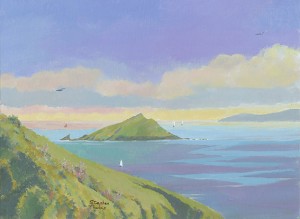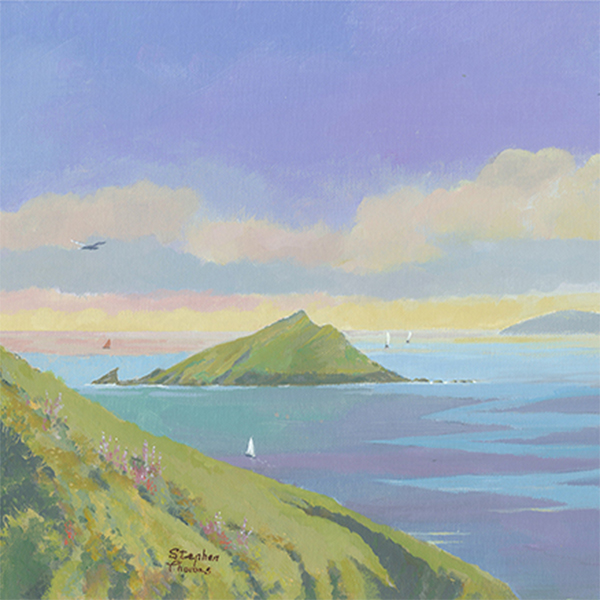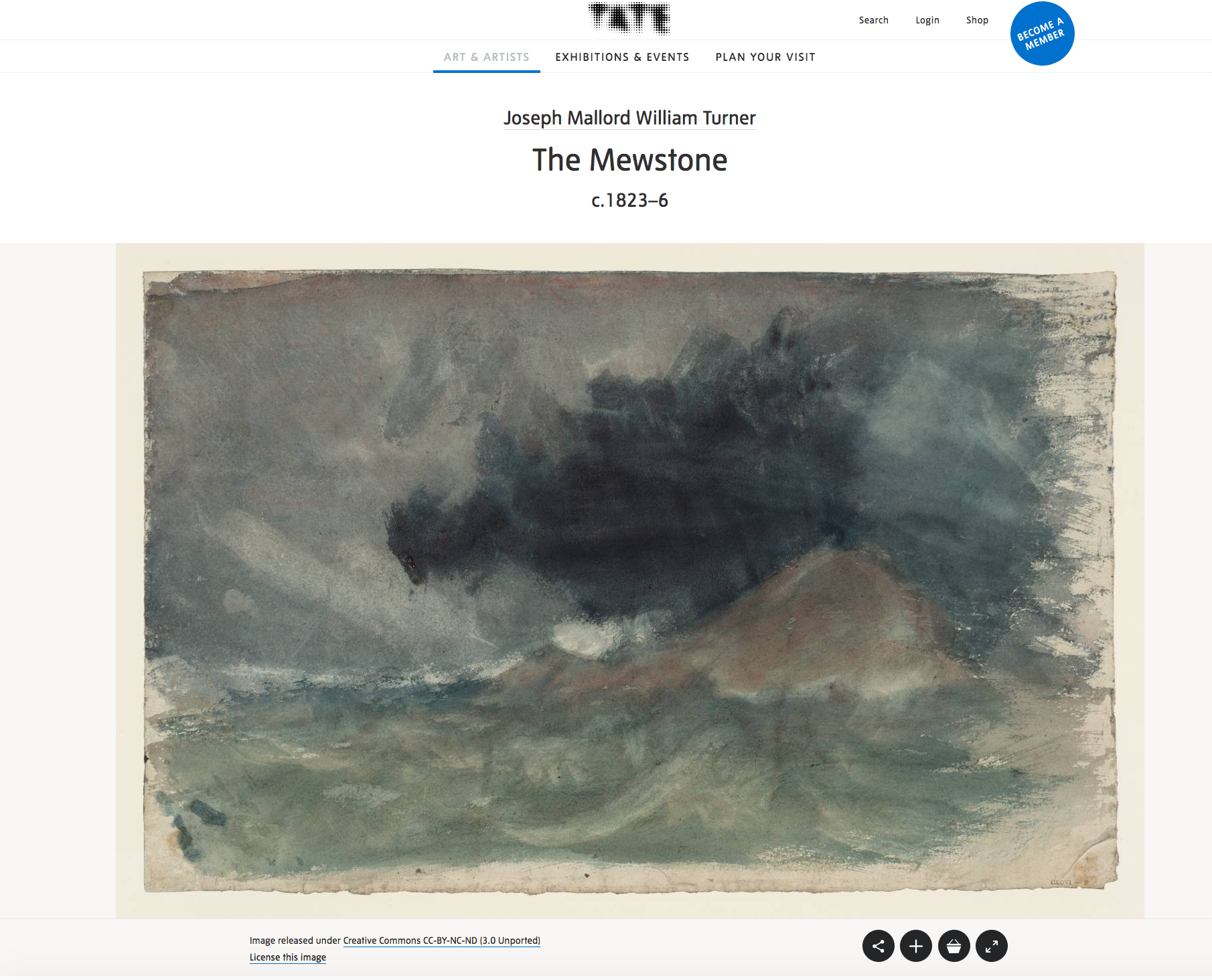CONTEMPORARY PASSIONS EXHIBITION PREVIEW: The Great Mew Stone, Wembury Bay
My ‘contemporary passion’ for the 2017 Contemporary Passions exhibition is ‘places other than Salcombe’. For the past decade or so, I’ve focused on scenes within easy walking distance of my home in Salcombe, and I’ve painted over 100 of them.
The Great Mewstone is a triangular island that stands about half a mile out from Wembury Point. As a bird sanctuary, it is currently uninhabited and access is no longer permitted to visitors.
In the past, however, there was a privately owned Manor House, and a prison. It is also thought to have served as a refuge for local smugglers.
Sam Wakeman
The Mewstone prison’s most famous resident was Sam Wakeman. In 1744, instead of being transported to Australia, he was sent to The Mewstone for seven years. Once free, Sam stayed on the island, earning his living by catching rabbits destined for the Manor House table.
Sam is also credited with carving the rough stone steps to the summit of the Mewstone.
Turner’s paintings 0f The Mewstone
While sailing from Plymouth in 1813, Joseph Mallord William Turner sketched the island and then painted it many times. One of these paintings had been identified as the Bass Rock in the Firth of Forth, but was re-catalogued as The Mewstone when it was auctioned by Christie’s in 2008.
Turner’s image is available to purchase through the TATE.
The Great Mew Stone, Wembury Bay as featured above, is the version used for a fine art greetings card. The original is not square and includes more of the headland on the western side.
The Great Mewstone rising out of the sea while tide, wind and currents scar the sea surface with competing patterns. It is hard to take in the distant shores of Cornwall.




